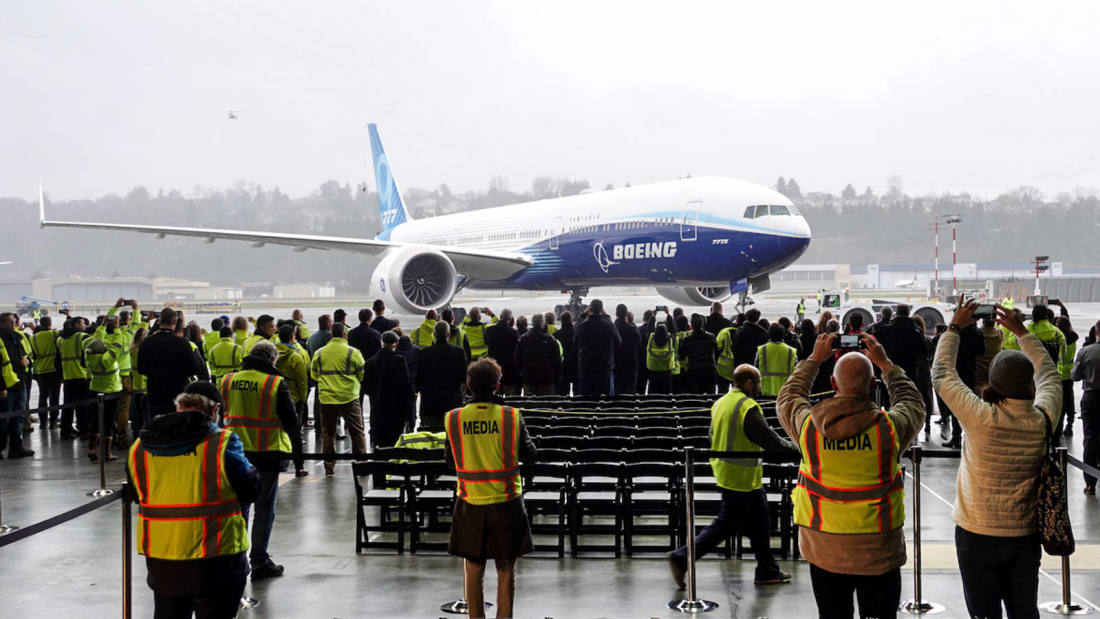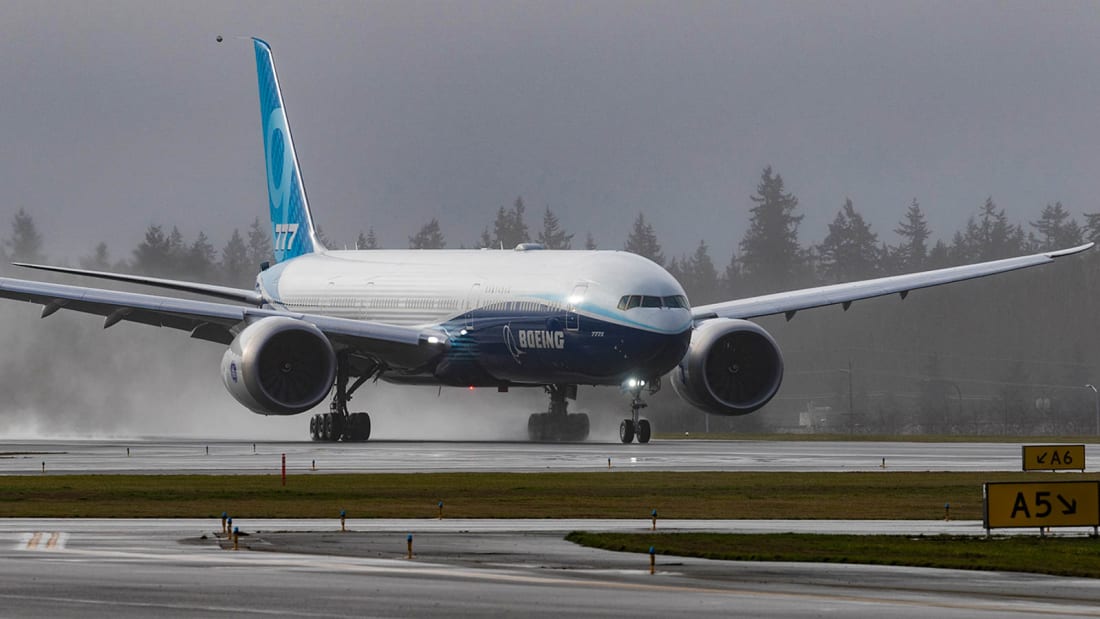Boeing has successfully completed the first test flight of the world’s largest twin-engined plane, the 777X.
The world’s longest and largest twin-engine airliner, the Boeing 777-9X, has finally taken to the skies for its maiden flight, offering a ray of hope for the troubled US aviation company following months of grim headlines.

The 252-foot-long (76.8 m) passenger plane had been due to launch this year but has been delayed by some technical difficulties.
The aircraft have a seating capacity of 426 passengers.
The 777X is a larger and more efficient version of Boeing’s successful 777 mini-jumbo. Standout features include folding wingtips and the world’s largest commercial engines.
After days of abysmal weather, airplane WH-001 took from Paine Field, home of Boeing’s wide-body factory, north of Seattle, on Saturday morning (25 January 2020).
BOEING 777X PROGRAM
The 777X, a program launched back in November 2013, is the successor to the most successful wide-body airliner ever built: the 777, which first entered service nearly 25 years ago.
At 252 feet long, the 777-9 variant is the longest commercial airliner ever built. With a fuselage stretch of 9.4 feet over its predecessor 777-300ER, the 777-9 is able to accommodate up to three additional rows of economy seats 10 abreast, for a total of up to 426 passengers in a typical two class configuration.
All that and an increased range of 7,285 nautical miles — 220 miles more than the airplane it replaces.
To lift the maximum takeoff weight of this 775,000 pound beast into the air, Boeing has built a new carbon-fiber-reinforced polymer wing with a wingspan of just over 233 feet, with raked wingtips. Each wing is the largest single composite structure in the world.
To fit on the same gates, taxiways and runways as the current 777-300ERs, Boeing has designed distinctive 11-foot folding wingtips that deploy just before take-off and retract upon landing. Though this is common on Navy fighter aircraft built for landing on an aircraft carrier, folding wingtips on an airliner are a commercial first.
Under the wings are the largest, most powerful engines ever mounted on a commercial airliner: General Electric GE9X.
These develop an incredible 105,000 pounds of thrust apiece while reducing fuel burn by 10% from their predecessor GE90 engine. The engines’ diameter are as wide as a 737 fuselage.
In spite of or because of their cutting-edge design and immense power demands, design flaws in the compressor of the engines have been a significant contributing factor to delaying the first flight of the 777X from 2018 to early 2019 and then to January 2020.

Boeing has 308 firm orders and 300 options of these $440-million aircraft (at list prices, though discounts can reduce cost by half). But the stability of these orders is uncertain with Gulf carriers and Lufthansa reportedly re-negotiating and lowering order their commitments, partially due to economic weakness.
Though the 777-300ER is immensely successful in the Americas, North American orders are yet to emerge.
As the replacement cycle for A380s and 777 Classics accelerates, Boeing expects the 777X order book to bulge by the middle of the decade.
This major milestone for the #777X airplane program begins the next critical phase of testing as we work towards certification and then delivery to customers in 2021. https://t.co/PP89sL3CSt
— The Boeing Company (@Boeing) January 25, 2020







